This report includes 23 practices to embed racial equity into your organization by developing, recognizing, and promoting frontline employees of color. Employers and practitioners can use this resource to structure and implement equitable policies for advancement to strengthen their business.
The future of work has received an avalanche of attention over the past several years from the media, academics, and policymakers. However, most discussion has been theoretical and speculative. And the challenges facing opportunity youth have largely been left out of this conversation. Given this context, the Aspen Institute Economic Opportunities Program and Aspen Institute Forum for Community Solutions, with support from the Citi Foundation, developed a practical approach and toolkit that community leaders can use to begin to learn how the future of work is playing out right now in their local economies. The toolkit includes a framework and questions to guide conversations with employers and young adults to learn from them about the nature and structure of work in specific occupations and what’s changing now; a guide to resources for conducting background labor market research to inform conversations; and sights from three organizations that pilot-tested the approach and toolkit in their communities
Good Jobs, Good Business is a comprehensive toolkit for small business owners seeking to improve job quality. The toolkit includes sections on Employee Compensation, Scheduling and Paid Leave, Hiring and Professional Development, Employee Engagement, Health Benefits, Retirement and Wealth Building, Racial Equity, and Covid-19. Each section helps users develop a business case and provides guidance on implementing new policies. This resource is designed for small business owners but can also be used by partners (including lenders and workforce development organizations) to coach businesses on job quality improvements with potential business benefits.
This question bank includes targeted questions that workforce development professionals can ask retail business representatives to have learning focused conversations and deepen relationships. The tool includes questions to help understand a business and its workforce, employee engagement, development and advancement in a firm, and wages and scheduling practices.
This report details the findings from a randomized 2019 Gallup survey of over six thousand American workers to understand their perspectives on job quality. The study offers a definition of job quality based on ten dimensions workers care about and provides useful findings and implications about who has a quality job and how job quality impacts quality of life.
This report identifies 12 evidence-based practices companies can use to help break down barriers women face in the workplace while simultaneously creating a competitive business advantage. This resource has applications for employers and the practitioners who work with them to create and implement policies that support a workplace that is gender inclusive.
The personal and economic needs of gig workers can be as varied as the platforms they use. In what ways is independent work working for people? In what ways can it pose problems? How can we build systems in which gig work is good work?
As a society that encourages work, we need to also consider what the rewards for hard work should be. We know that working people need access to benefits such as health insurance and paid sick days, but who should provide them? What kind of flexibility do workers need and how well does that match with business needs for flexible access to workers? Can gig jobs support both thriving businesses and thriving workers and families?
This event explores the issues and opportunities facing gig workers and offers ideas for building supports to make gig work good work.
While the low quality of many “essential” jobs became more apparent during the pandemic, the issue of low-quality jobs is longstanding. This publication is based on a survey of organizations about their efforts to advance job quality. Survey responses were gathered before the effects of the pandemic took hold, and understanding perspectives on job quality then can give us important insights as we tackle the urgent challenge of improving job quality now. Many organizations are working to improve job quality both within their own organizations and externally, but they face a variety of challenges. They are eager for more tools and resources to support their efforts.
This report details the findings of a stable scheduling study conducted at Gap stores by an interdisciplinary team of academics. During the pilot study, stores in San Francisco and Chicago implemented stable scheduling practices, including two-week advance notice, elimination of on-call scheduling, tech-enabled shift swapping, and targeted additional staffing. Findings included a 7% increase in median sales and 5% increase in labor productivity at treatment stores. This study’s findings help to demonstrate the potential business benefits of stable scheduling.
This is a profile of Charm City Run, a Baltimore-area running and walking specialty store, as part of the Good Companies/Good Jobs initaitive research.
